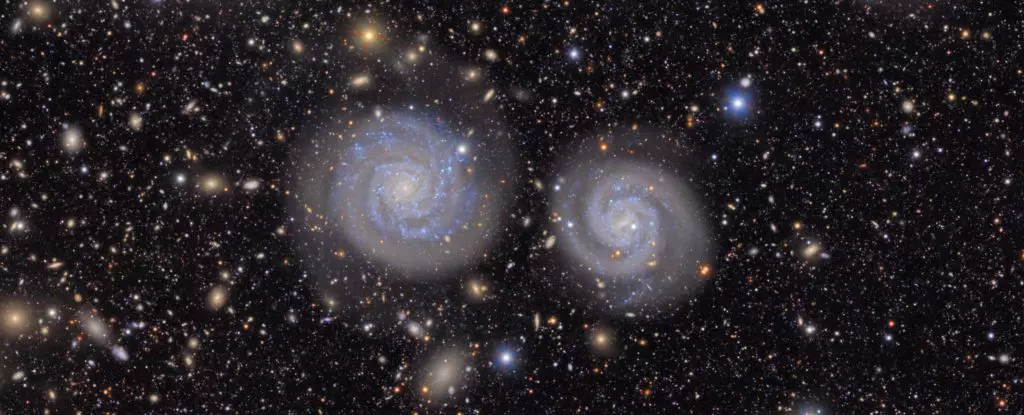The advent of the Vera C. Rubin Observatory marks a pivotal moment in the field of astronomy, reminiscent of launching a new era of exploration similar to the dawn of the Hubble Space Telescope. As the curtain has been lifted on its initial images, it becomes clear that this extraordinary telescope possesses formidable capabilities that promise to transform our comprehension of the cosmos. The observatory, equipped with cutting-edge technology, has kicked off its journey by peering deep into the universe and capturing stunning visuals that excite both seasoned astronomers and space enthusiasts alike.
An Astronomical Powerhouse
Situated under the star-studded skies of Chile, this state-of-the-art facility harnesses the power of its 3,200-megapixel camera—the largest of its kind—to conduct a sweeping survey of the southern hemisphere. Its inaugural task is nothing short of ambitious: the Legacy Survey of Space and Time (LSST), a decade-long undertaking aimed at mapping the entire southern sky with unprecedented depth and clarity. Every few days, the observatory will survey the sky repeatedly, amassing an expansive archive of data that is expected to be richer than that of all optical telescopes combined throughout human history. This monumental endeavor could yield solutions to some of our greatest cosmic puzzles, including the puzzling nature of dark matter and dark energy.
A Deluge of Discovery
Through a staggering ten hours of observation, the Vera C. Rubin Observatory managed to uncover the secrets of over 2,100 previously unidentified asteroids, highlighting its proficiency in capturing celestial bodies in motion. For context, existing ground-based telescopes typically uncover around 20,000 new asteroids each year combined; Rubin is poised to eclipse that figure exponentially. These findings not only provide invaluable data for Earth defense initiatives against potentially hazardous objects but also reaffirm the observatory’s role as a pioneering tool for planetary science and asteroid research.
Moreover, the first images released include stunning captures of the iconic Trifid and Lagoon Nebulae, dense regions where new stars are born amid turbulent cosmic gas clouds. The observatory’s ability to compile around 678 individual images into a glorious mosaic, nearly 5 gigapixels in size, demonstrates its remarkable efficiency and prowess. Engaging with these high-resolution images provides an interactive experience, inviting viewers to explore the complexities of the cosmos in ways previously reserved for professional astronomers.
Charting the Unknown
The Rubin Observatory is not just a telescope; it is a groundbreaking scientific instrument designed to highlight movements, flashes, and bursts across the universe. Whether capturing supernovae detonating millions of light-years away or cataloguing the transient behavior of far-flung galaxies, its goals stretch beyond simple observation. The range of phenomena it aims to study invites a broader understanding of our universe, challenging scientists to rethink existing paradigms and enriching the tapestry of astrophysical research.
Acting NSF Director Brian Stone has pointedly remarked that this facility will serve as a linchpin in unraveling the mysteries of dark matter—a fundamental component of our universe that remains largely undetectable. Through persistent observation, data collection, and analysis, the Rubin Observatory will undoubtedly synthesize information that shifts our scientific perceptions and pushes the boundaries of human knowledge.
Preparing for a Cosmic Revolution
The significance of this observatory extends beyond mere technical specifications; it embodies humanity’s relentless pursuit of knowledge. The very architecture of the facility, its mirror design, and sensitivity settings are unprecedented, promising a newfound edge in astronomical research. Each step forward is laden with opportunity, as the Rubin Observatory stands ready to reveal both the wonders and the puzzles that await us in the vast universe.
As we move into a new era of cosmic exploration, the excitement surrounding the first images serves as a beckoning call for scientists, educators, and the general public alike. The future of astronomy is bright, promising an era defined by discoveries that will not only deepen our understanding of the universe but also shape the very fabric of scientific inquiry and curiosity for generations to come. The Rubin Observatory is more than a telescope; it is a gateway into the cosmos, inviting everyone to join the exploration.

